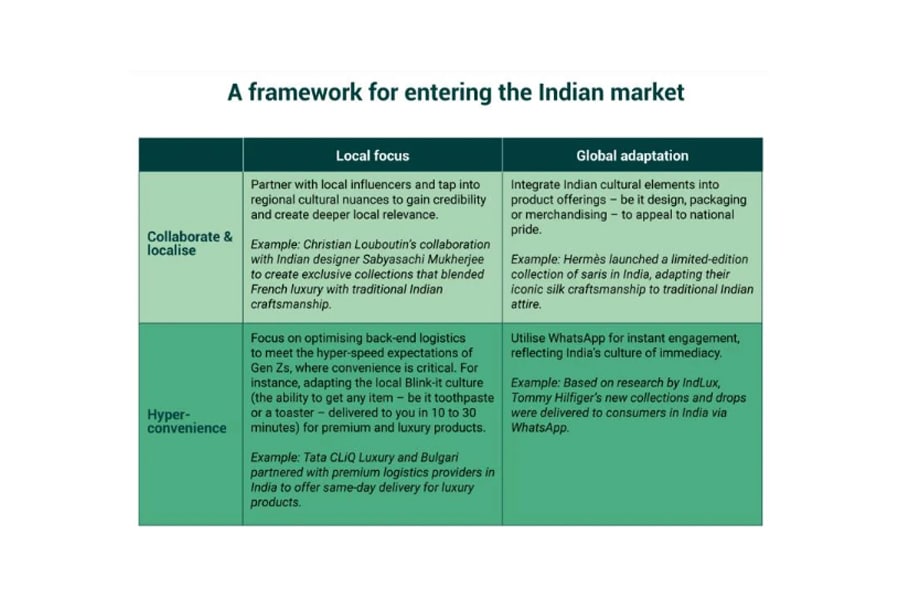Is India the next global luxury hub?
India looks set to be the luxury market's next growth driver. Here's how brands can make their mark


India’s luxury landscape is at a crucial juncture. With a booming economy, the world’s largest population and a dynamic, youthful demographic, the country has been dubbed the next luxury hub, especially at a time when luxury consumption in China is declining as spending softens.
Is the centre of the world’s luxury market shifting from China to India, as a fast-growing appetite in goods such as high-end watches suggests? And, if so, how should brands approach and win over luxury clients in this market known for its millennial craftmanship and strong culture?
The country’s luxury market, currently valued at US$17 billion, is set to more than triple by 2030, growing to upwards of US$85 billion. Years of impressive GDP growth have turned India into the world’s fastest-growing major economy. This economic surge will boost the number of ultra-high-net-worth individuals – people with a net worth of at least US$30 million – by an anticipated 50 percent by 2028.
“When it comes to India, don’t take a snapshot, focus on the trajectory," said Mahi Khanna, project lead at IndLux. Indeed, the expanding middle class and their growing disposable income are propelling what will be a US$2.2 trillion retail market by 2030, which will make India the third largest globally.
Unique to India are the country’s cultural and historical ties with luxury, both older and stronger than in many other markets. As Khanna observed: “Luxury is as old as our civilisation – it is part of India’s cultural and historical DNA." Luxury has deep roots in the subcontinent, from the Maharaja of Patiala, known as the largest owner of Cartier jewellery, to the intrinsic cultural value placed on artistry, craftsmanship and opulence.
But local and foreign brands face various challenges tied to the landscape: a complex regulatory environment, inadequate luxury retail infrastructure and consumer behaviour nuances that demand a tailored approach.
However, success requires clarity in targeting distinct personas within this diverse generation. Research of key stakeholders – including wealthy Gen Zers and top influencers, whom IndLux named “the Catalyst Generation" – highlighted five major Gen Z personas with different expectations:

Insights from IndLux revealed that young Indian consumers have started cultivating their own #IYKYK (“If You Know, You Know") factor, where they navigate the balance between obvious recognition and understated elegance. The idea for brands is to create “the zone of coolness", a space that “whispers quality rather than screaming opulence".
An additional complexity is the deep integration of family dynamics. The concept of “independence without individualism" is crucial for understanding luxury consumption in India. Family approval and shared experiences are significant parts of the buying process. Young buyers might make decisions, but parental or family involvement remains integral. “Unlike in the West, in India, luxury is very much a family affair," Khanna emphasised.

Broadly speaking, success in the Indian market will lie in brands’ ability to balance local authenticity and global appeal – and their willingness to “learn to love and speak to India", as Grouiller noted.
The country is undeniably a luxury growth engine, but navigating its complexities requires more than mere presence. Brands need an approach steeped in local insights, sensitivity to cultural and generational shifts, and a commitment to long-term engagement rather than short-term gains. Gen Z is not just the future but the catalyst that will reshape India’s luxury market – a cohort with power, promise and the means to make or break global players in the Indian context.